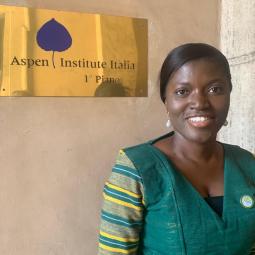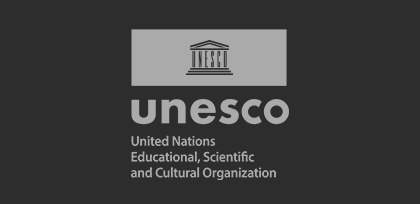Can COVID-19 be beneficial for Nepal’s food production?
May 08, 2020
Dr Hemu Kharel Kafle is Chair of the OWSD Nepal National Chapter, and an OWSD Early-Career Fellow working on the assessment of drought in Nepal and its impact on food and water availability.
In the wake of this massive COVID-19 outbreak, we’ve seen countries scrambling to recover from the shock, and, in time, overcome it. We’ve seen nationwide lockdowns and curfews and amid all this, feeding their respective people is as much of a priority as is maintaining their health. It can be assumed that once the pandemic is under control, most countries will prioritize their populace and will start to shore up production, maximize storage and subsequently minimize imports. Therefore, it is not without reason to infer that countries highly dependent on imports such as ours have a great reason to worry.
Even though Nepal is endowed with the resources needed for high land productivity, many households, particularly in the mountainous regions of Nepal, experience food shortages for 4–9 months a year. This is without the addition of a pandemic or a shortage situation. More than 50% of the districts in Nepal are considered food-deficient by FAO (http://www.fao.org/fileadmin/templates/ess/documents/apcas26/presentations/APCAS-16-6.4.4_-_Nepal_-_Food_Security.pdf). Population growth and the increase in the demand for food, on one hand, and insufficient growth in farm productivity on the other has turned Nepal gradually from a food-exporting country to a food-importing country.
On paper, agriculture is the mainstay of Nepalese economy and contributes to 33% of the total GDP. In reality today, Nepal is an agricultural nation in nothing but name, highly reliant on the economy to be able to buy grains and other foodstuff in form of imports, depending on its neighboring countries to meet the food demand of its growing population.
We have already seen how woefully underprepared we are to deal with another food deficiency from the 2015 earthquake and the blockade that ensued. We are also aware that we cannot be reliant on international aid when everyone will be focused on internal repair. The question now is what can we do about it?
We have seen the arrival of our foreign workers as “widening the curve” of the pandemic. We have watched with apprehension as droves of people arrive from red zone areas from the middle east and even from India with fear that this influx is going to further increase Nepal’s chance of succumbing to this outbreak. Right now, the majority of this population is sitting idle, uncertain of their future as much as everyone else in the country, with the added burden of wondering if they will still be employed when the world order is restored. Obviously in the current state of events, their health as well as the health of the entire nation is of utmost importance, seeing as there is no future without the people to build it.
The government has its hands full trying to prevent an outbreak, as it should be. While COVID-19’s impact can be felt mostly in the health sector, what of the larger impact posed, for instance, on food security?
With the threat of imports being cut off in the post pandemic scenario, a new question arises. What will we eat? Even if imports were available, our remittance reliant economy can hardly be expected to support both imports and internal recuperations.
There may, however, be a way to use this outbreak and the surplus manpower as a stepping stone towards food security and self-sufficiency. Now that it has been established that our currently nonexistent income cannot be counted upon to feed the population, institutions such as the ministry of agriculture have to step up to increase production, coming up with plans and policies fully utilizing the reams of currently unemployed manpower in the production of foodstuff. There are only a number of governmental and nongovernmental institutions that can contribute to this cause while the rest are left to simply observe, twiddling their collective thumbs. Branches of the government that cannot contribute directly to the health sector should now focus on contributing to other sectors affected by the pandemic. For instance, the recent policy introduced by the Ministry of Agriculture and Livestock Development offering loans at a 5% interest rate for any agro-based work is a welcome step designed to attract people towards agriculture, aiming to raise production by some degree. An increased focus on similar policies bringing back agriculture as a sustainable occupation can raise production substantially, helping us lower our atrocious import rates and become self-sufficient in the future.
We can confirm that this is not only the ramblings of an idealist but an actual possibility as Nepal was self sufficient on rice production and exported substantial quantity of rice until the mid-1980s. Rice used to be exported from the Terai to the nearby Indian markets and the hills as well. Nepal was self-sufficient in food production, and infrastructure was the only thing keeping it from transporting the yield of one region to the other. With no such outstanding problems in infrastructure, and the availability of diverse farming systems as well as an extreme variation in agro-ecological zones enabling production of varying crops, Nepal can restore its former self-sufficient glory through policies and a little encouragement.
This may be too grand a statement to be relevant in these times, but the bottom line here is ensuring our people do not starve. Whether it be engaging the populace in agricultural production or utilizing the expertise of researchers and private institutions working for food security, we need reassurance that we can ride out this pandemic and all its after effects together.
This article originally appeared in the Nepalese Newspaper Naya Patrika Daily











































